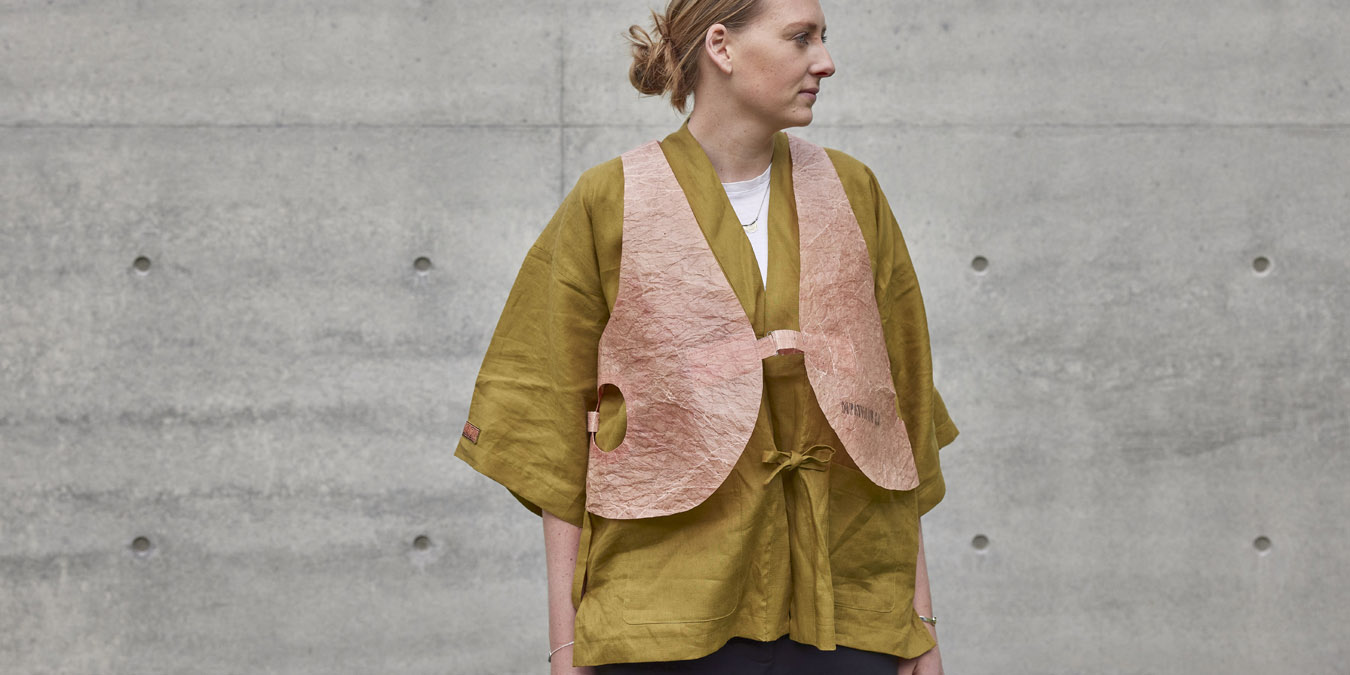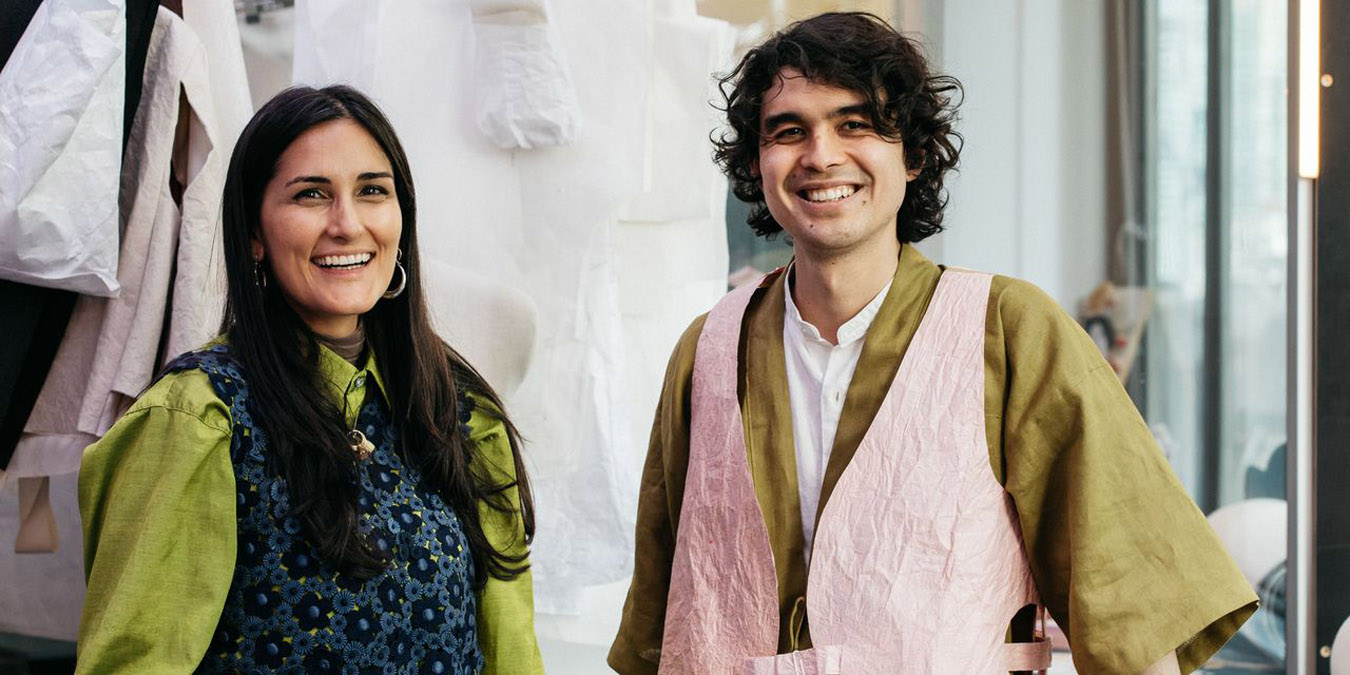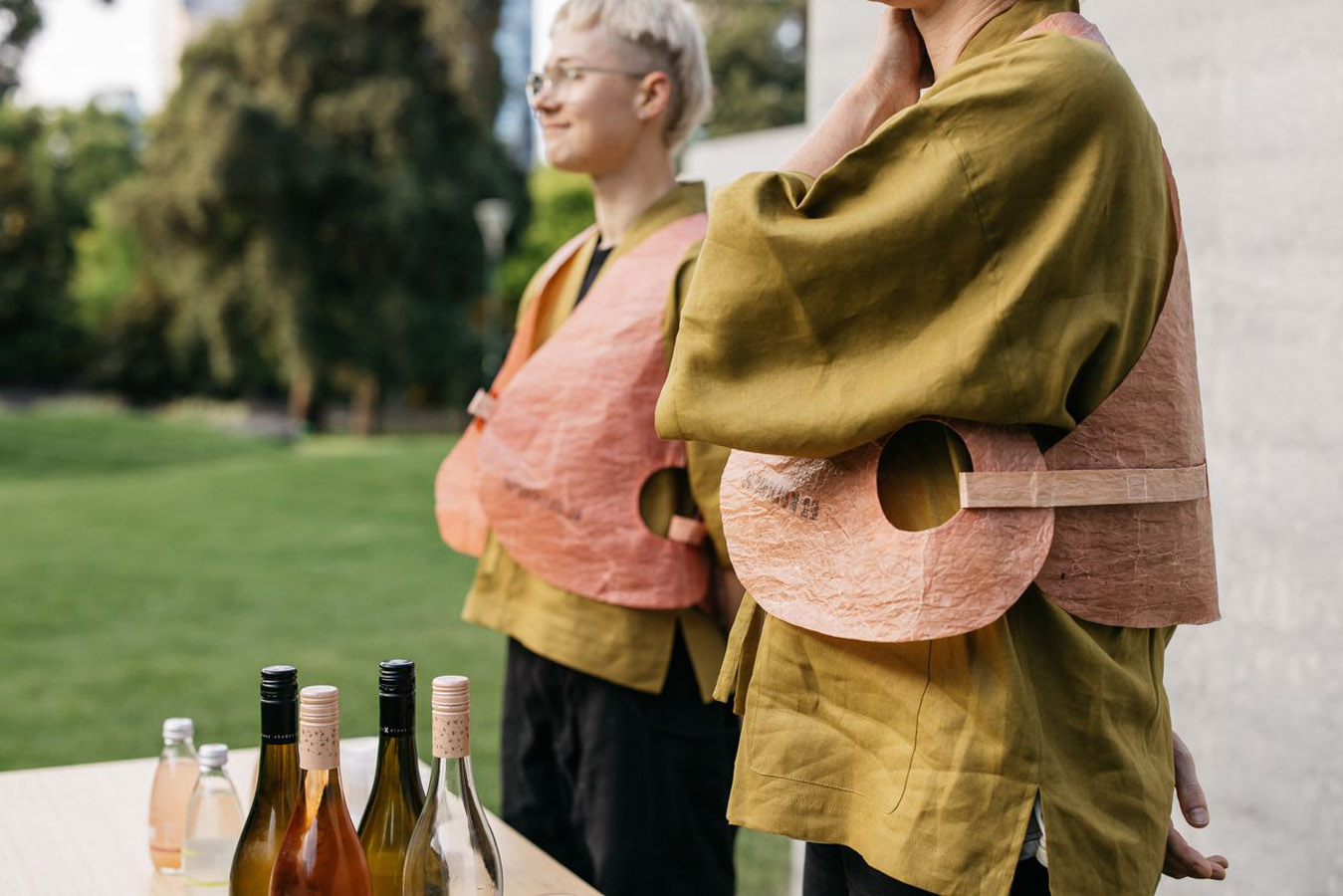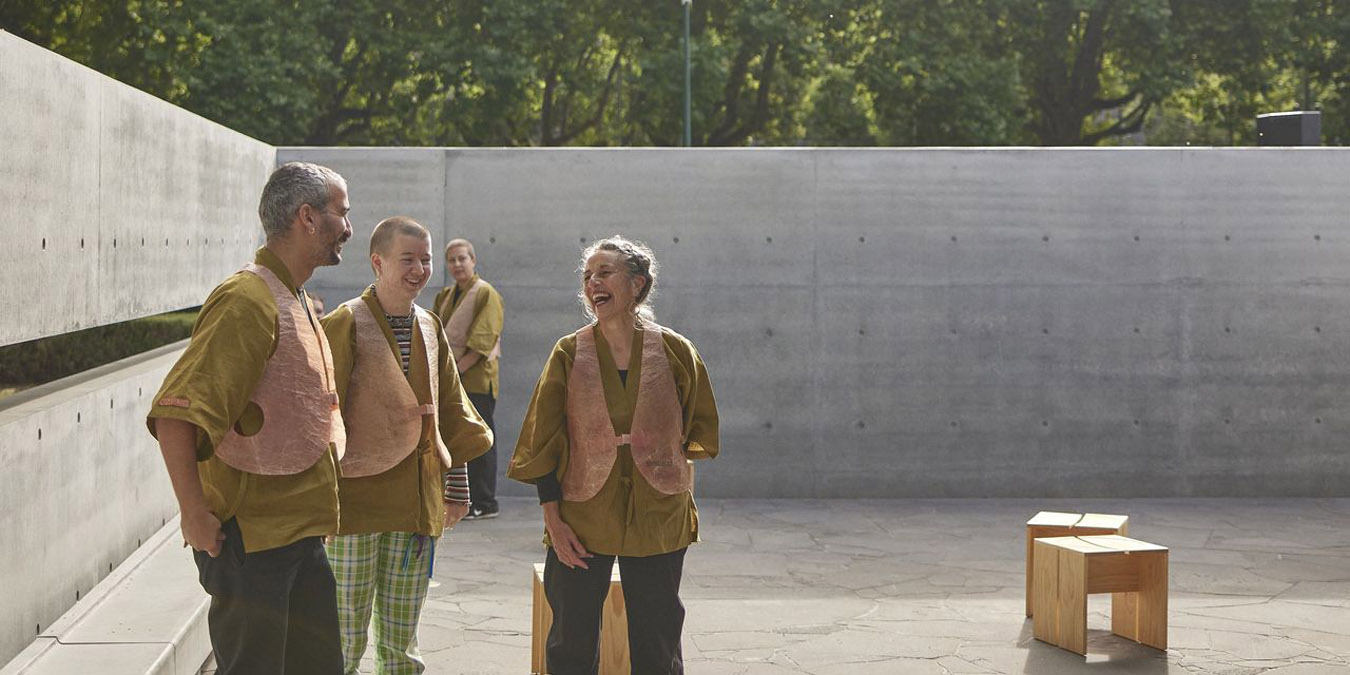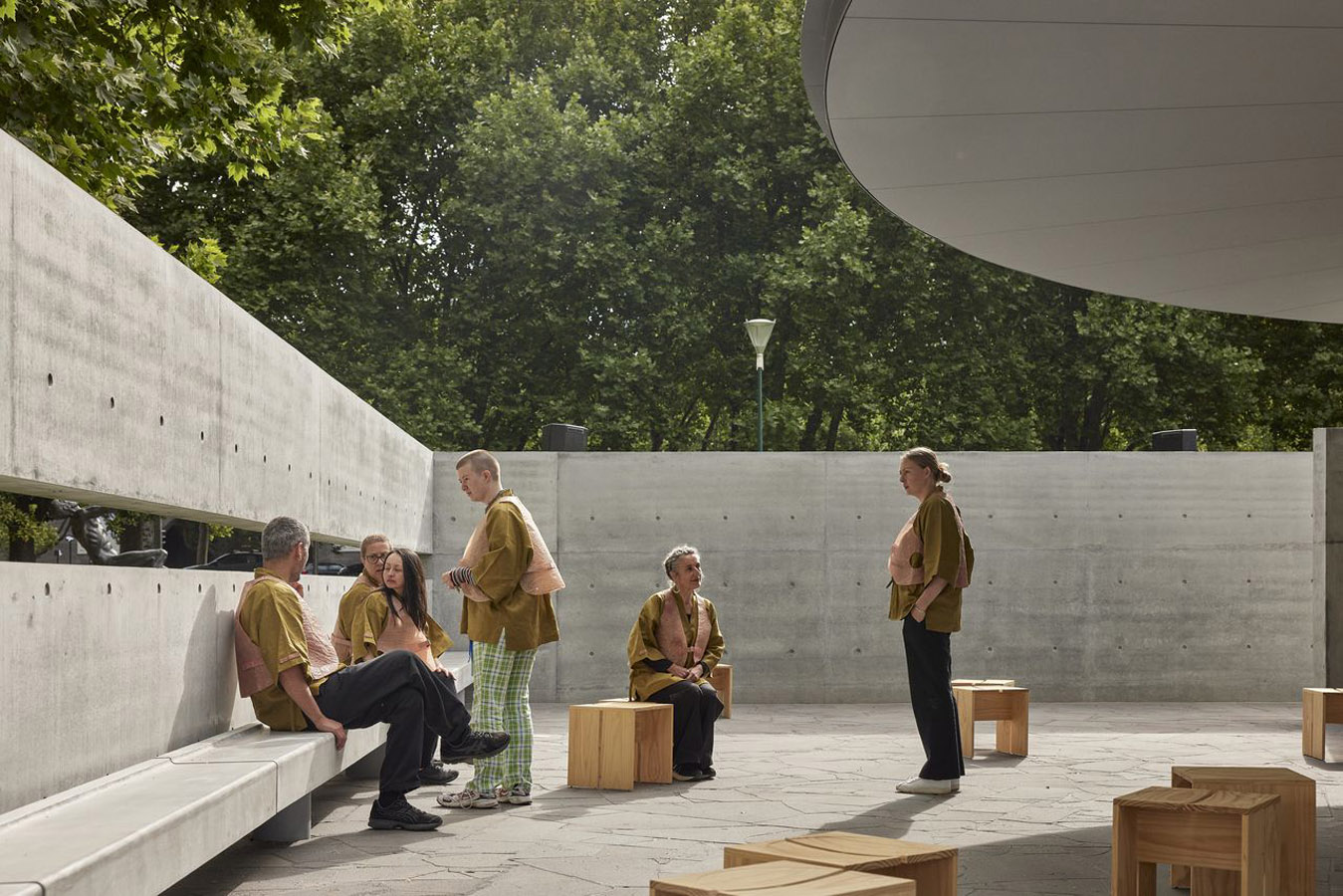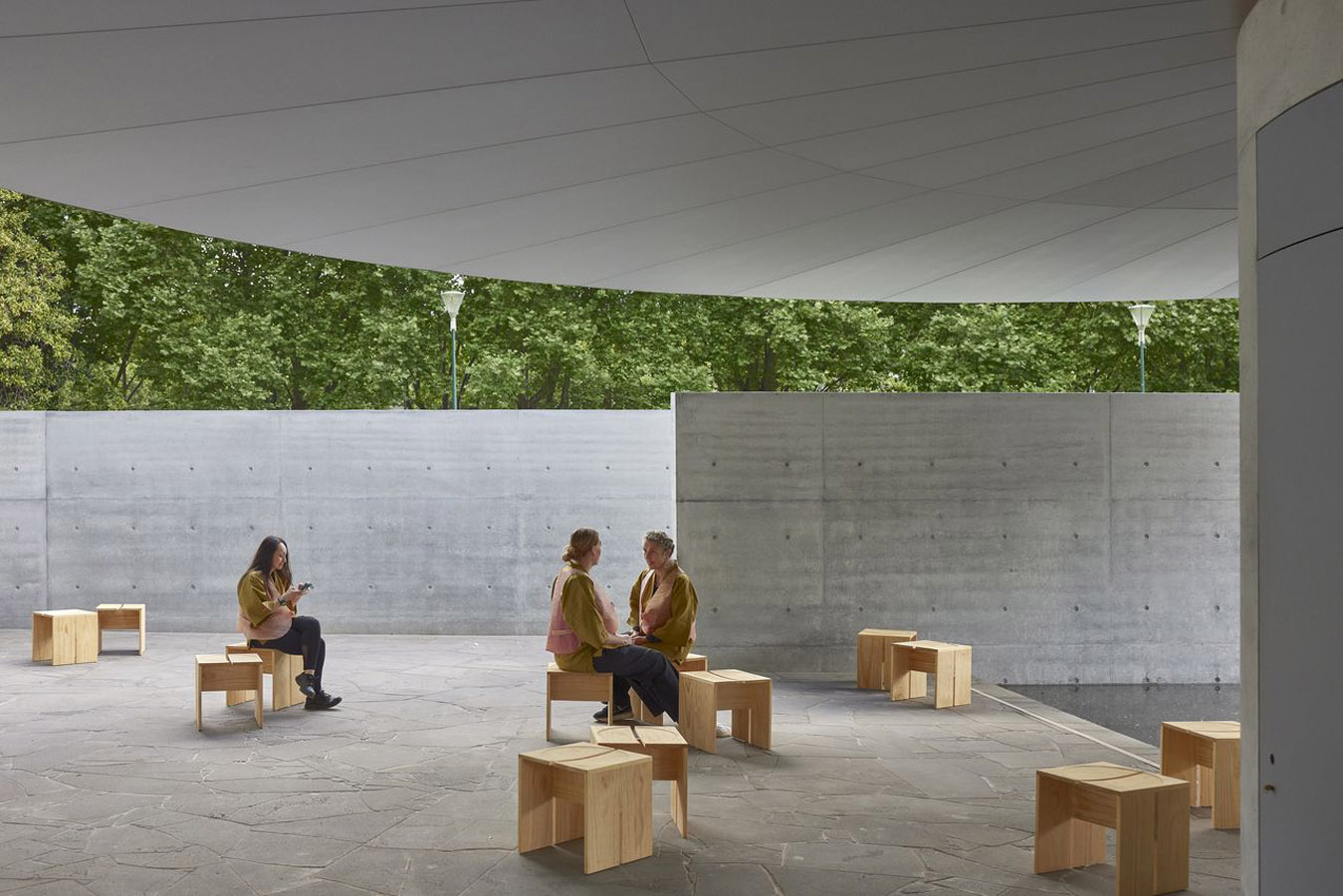DNJ Paper responded to the brief by developing a cardamon-green linen jacket and a pink paper vest worn on top, inspired by a Japanese-style work coat called a samue and traditional Japanese paper clothing called kamiko.
Typically producing small custom made-to-order garments, designing a paper uniform from handmade washi paper was a unique engineering challenge. The wear and tear the paper vest would endure over the summer, and the fit of the uniform on bodies of varying proportions were important considerations.
Some elements of the design, such as the circular area with the adjustable strap, were designed in response to the forms in the pavilion. In order to weatherproof the vests, a custom oven was built to be able to wax the entire garment.
The fine, lightweight linen compliments the smooth concrete of MPavilion 10, and wrinkled, waxed paper brings texture to the space. The colour choice was inspired by the grey & green hues of the structure and the surrounding nature. DNJ Paper’s design is light yet durable, low waste, evolves over time and eventually wears away creating contrast with the rigid, unchanging nature of MPavilion 10. Having a material that asks you to be mindful about how you’re interacting with it, but is also surprisingly durable, creates an exciting tension.

